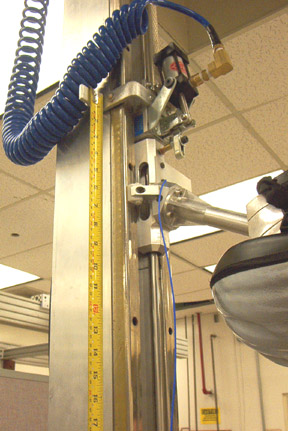Além destes cuidados, a escolha do tênis é fundamental para uma boa performance e manutenção da sua saúde.
Mas como um tênis é constituído?
Um tênis é constituído por seis partes: cabedal, palmilha, entressola, solado, amarração e talão.
- A palmilha é responsável pelo posicionamento adequado do seu pé dentro do tênis.
- A entressola que garante a dispersão da forças decorrentes da pisada e o controle de movimentos, fica localizada entre o cabedal e o solado, sendo a parte onde se encontra os sistemas de amortecimento.
- O solado ou sola, é a parte do tênis que fica em contato direto com o solo e garante estabilidade e a tração necessária durante a pisada.
- O sistema de amarração é a estrutura formada pelo cadarço e os passantes, fundamental para a firmeza do seu pé dentro do tênis. No caso dos tênis de corrida são utilizados cadarços mais finos e passantes na forma de furos que se concentram na área de maior mobilidade durante a corrida - a lingüeta, para que garantam firmeza sem aperto.
- Por último, está o talão, a estrutura que sustenta o calcanhar e posiciona o tornozelo corretamente dentro do tênis e deve apresentar um reforço especial para assegurar uma passada mais firme.
Lembre-se de que o tênis tem a função de dispersar as forças decorrentes da pisada - amortecer o impacto - e estabilizar os movimentos, evitando a pronação - virada para 'dentro' ou a supinação - virada para 'fora'.
Deve respeitar a morfologia do seu pé e o padrão da sua pisada, além de ser adequado ao tipo de treino ou prova - tempo, solo, distância - no(a) qual você irá usá-lo.
Por falar em tipo de pisada, você sabe qual é a sua?
Existem três tipos de pisada: a pronada, a neutra e a supinada.
 |
| Fonte: Pé Sem Dor |
Modelos: Nike LunarGlide+ 5, Asics Gel Kayano, Mizuno Wave Nirvana.
Já a pisada neutra é quando toda seu pé toca o chão apoiando o lado externo e se movendo levemente para dentro, seguindo em linha reta até a elevação do hálux, no movimento final de impulsão.
Modelos: Nike Pegasus, Mizuno Wave Creation, Asics GT 2160, Asics Gel Cumulus 13, Adidas Adios 2.0, Adidas Boston.
Finalmente, na pisada supinada, para 'fora', seu pé toca o chão no lado externo do calcanhar e continua o movimento usando o lado mais externo, ganhando impulso no quinto pododáctilo, vulgo 'dedilho'.
Modelos: Asics Gel-Nimbus, Adidas Supernova Glide, Nike Vomero.
Existem vários modelos de tênis de corrida indicados de acordo com a flexibilidade do arco plantar, para cada tipo de pisada, de treino ou de prova.
Sem contar os tênis minimalistas, com muito menos controle de movimento, visando a simulação de uma corrida descalço, como: Adidas AdiPure, Asics Gel Blur 33, Saucony Kinvara, Nike Free Run, entre outros.
Cabe a você escolher a marca e o modelo que mais se adequa a suas necessidades. O importante é experimentar, sempre que for possível, com meias que geralmente utiliza durante suas corridas e levar em conta o espaço na biqueira necessário para o movimento de seus dedos, bem como o perfeito ajuste no seu pé.
Divirta-se sempre e bons treinos.








.jpg)




.jpg)








